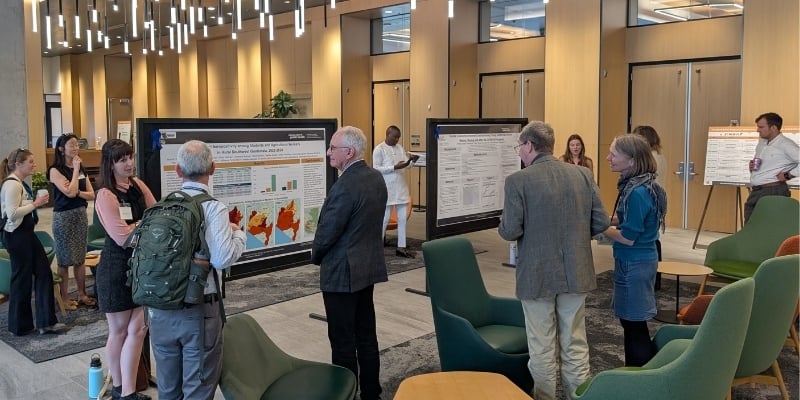In the summer of 2020, the COVID-19 pandemic was raging, vaccines were not yet available, and workplaces and universities, including Colorado State University, had taken what operations they could online.
But for many, remote work was not an option. Throughout the pandemic, hundreds of “essential” workers kept cooking food in dining halls, providing health services, protecting public safety, and caring for lab animals.
A team of CSU researchers wanted to understand if health protocols like mask wearing and social distancing were effective at protecting these populations, and if they could provide evidence that such protocols could bring others back to campus in the fall safely. At the time, the world was learning about asymptomatic spread of the virus, underscoring the urgency of decreasing outbreak risks.
The team set out to answer such questions by launching a study of more than 500 essential employees at CSU, the results of which were recently published in JAMA Open Network. The study was conceived by Sue VandeWoude, a professor in the Department of Microbiology, Immunology and Pathology and director of the One Health Institute at CSU, who pulled together a team of experts and received funding from the Boettcher Foundation to support the work.
Those experts included: Tracy Nelson, director of the Colorado School of Public Health at CSU and professor in the Department of Health and Exercise Science; Greg Ebel, director of the Center for Vector-Borne Infectious Diseases at CSU; Nicole Ehrhardt, director of the Columbine Health Systems Center for Healthy Aging at CSU; Lori Lynn, executive director of the CSU Health Network; and others.
508 essential workers
The study was conducted between July 13 and Sept. 2, 2020. The 508 employees studied were from units including the CSU Veterinary Teaching Hospital, facilities, housing and dining, the CSU Health Network, Laboratory Animal Resources, central receiving, campus police, and some research labs. Each group had different potential risk factors for exposure to SARS-CoV-2, but all identified as essential in-person workers during the first six months of the pandemic.
The participants completed a survey and submitted blood and nasal swabs to assess active SARS-CoV-2 infection. Most reported strict adherence to guidelines like mask wearing, hand washing and social distancing, both on and off campus, and those behaviors correlated with extremely low exposure rates; of those surveyed, none tested positive for the virus, and only two participants tested positive for SARS-CoV-2 antibodies.
Those surveyed said they were more concerned about exposing others in their workplaces than contracting COVID-19 themselves, and those who were most concerned were more likely to wear a mask and wash their hands, the researchers found. “This concern can be described as prosocial behavior, or behavior that is helpful and intended to promote social acceptance,” Nelson said.
In the paper, the researchers noted that “prosocial behavior has been shown to lead to greater positive affect, meaningfulness, empathy, and social connectedness, which may influence employees’ desire to protect their coworkers from an infectious virus (or any other threat) as well as overall morale.”
Post-vaccination phase
Fast forward to now, with vaccines widely available and some workplaces and universities requiring students and staff to be vaccinated. Results of the study indicate that for faculty and staff who remain unvaccinated, particularly as the Delta variant of the virus continues to spread, protective behaviors like mask-wearing should still be followed on and off campus, the researchers said. The Centers for Disease Control and Prevention also recently amended its masking guidelines for fully vaccinated individuals.
“We believe that cultivating a prosocial attitude on campus will be important to increase the likelihood of these behaviors persisting through the next phase of the pandemic,” Nelson added. She pointed to the work of CSU’s Social Norming Task Force, which has been instrumental in promoting public safety behaviors; their work could be modified and built upon going forward in the post-vaccination phase of the pandemic.
The team of authors included experts in human data collection, biospecimen handling, infectious disease surveillance, and statistical analysis.
“CSU has a lot to be proud of with these findings,” VandeWoude said. “Employees conducted themselves responsibly and with care for their coworkers and families, guided by effective leadership, messaging and protocols that maintained a safe work environment during the early phases of the pandemic.”
This story was originally written for CSU Source.






